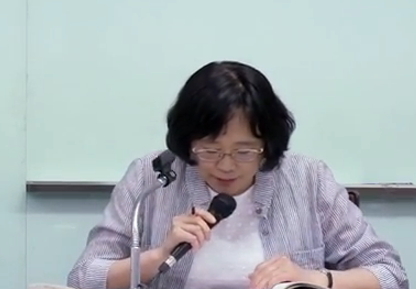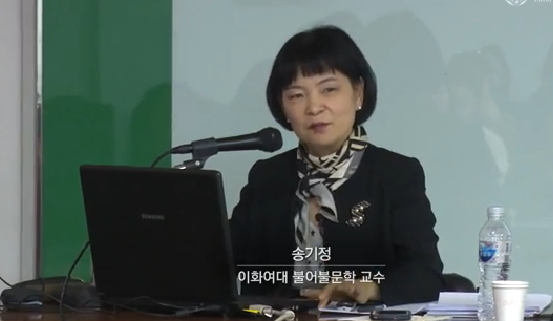Traditionally, Beijing and Tianjin had formed a close interdependent relationship. Until the pre-modern era, they were organized as the capital and its peripheral city, and though this order reversed after modernization, but despite this superficial c...
http://chineseinput.net/에서 pinyin(병음)방식으로 중국어를 변환할 수 있습니다.
변환된 중국어를 복사하여 사용하시면 됩니다.
- 中文 을 입력하시려면 zhongwen을 입력하시고 space를누르시면됩니다.
- 北京 을 입력하시려면 beijing을 입력하시고 space를 누르시면 됩니다.

베이징 ‧ 톈진의 상호관계와 그 변화 양상 = The Interrelationship between Beijing and Tianjin and Its Changing Trends
한글로보기https://www.riss.kr/link?id=A108945900
-
저자
박정희 (부산대학교)
- 발행기관
- 학술지명
- 권호사항
-
발행연도
2024
-
작성언어
Korean
-
주제어
베이징 ; 톈진 ; 상호관계 ; 도시정위 ; 근대화 ; 징진지 협력발전 ; Beijing ; Tianjin ; Interrelationship ; Urban position ; Modernization ; Jing-Jin-Ji Cooperative Development
-
등재정보
KCI등재
-
자료형태
학술저널
-
수록면
267-289(23쪽)
- DOI식별코드
- 제공처
-
0
상세조회 -
0
다운로드
부가정보
다국어 초록 (Multilingual Abstract)
Traditionally, Beijing and Tianjin had formed a close interdependent relationship. Until the pre-modern era, they were organized as the capital and its peripheral city, and though this order reversed after modernization, but despite this superficial change, the close interaction between Beijing and Tianjin was so dominant that it could not be replaced by the relationship between Beijing and other cities. However, after the founding of the People’s Republic of China, Beijing sought to reclaim all positions Tianjin had occupied to restore its former status and position. Since then, the relationship between Beijing and Tianjin has become a contradiction in terms, with Beijing and Tianjin each becoming a sprawling metropolis, suffering from various metropolitan diseases and downgrading in status. The Jingjinji Cooperative Development Plan was proposed to solve this problem. Its main focus was on integrating Tongzhou as a sub-center into Beijing and undertaking large-scale development in Xiong’an New Area to decentralize Beijing’s non-capital functions. As a result, Tianjin, which had long monopolized the traditional relationship of interdependence with Beijing, now had to compete with Tongzhou and Xiong’an New Area. For this reason, the work of Tianjin’s local historians and cultural and artistic practitioners to actively remember and recall modern Tianjin becomes a symbolic activity that creates a crack in the centripetal force of the Jingjinji Cooperative Development Plan’s inclusive, collective memory project.
국문 초록 (Abstract)
전통적으로 베이징과 톈진은 긴밀한 상호의존적 관계를 형성하고 있었다. 근대화 이전 시기까지 베이징과 톈진은 수도와 주변도시로 질서화되어 있었고 근대화 이후 이 질서는 역전되었지...
전통적으로 베이징과 톈진은 긴밀한 상호의존적 관계를 형성하고 있었다. 근대화 이전 시기까지 베이징과 톈진은 수도와 주변도시로 질서화되어 있었고 근대화 이후 이 질서는 역전되었지만, 이런 표면적인 변화에도 불구하고 베이징과 톈진의 긴밀한 상호영향 관계 는 베이징과 여타 도시의 관계로 대체할 수 없을 만큼 우세한 것이었다. 하지만 중화인민 공화국 건국 이후 베이징은 기존의 위상, 지위를 회복하기 위해 톈진이 점유하고 있던 모든 지위를 회수한다. 이후 베이징과 톈진의 관계는 모순관계로 변모하고, 베이징과 톈진 은 각각 비대한 종합도시가 되어 각종 대도시병(大都市病)을 노정하거나 도시 위상이 격 하되는 각자의 곤경에 처하게 된다. 이 문제를 해결하기 위해 제기된 것이 징진지(京津冀) 협력발전 계획이다. 퉁저우를 부중심으로 베이징에 편입시키고 슝안신구를 대규모로 개발 하여 베이징의 비수도적 기능을 분산시키는 것이 이 계획의 주된 내용이다. 이로 인해 톈진은 베이징과의 상호의존적 관계라는 오랫동안 독점해 온 전통적 관계를 퉁저우나 슝 안신구와 경쟁하면서 나누어야 한다. 이 때문에 톈진 향토사학자, 문화예술인들이 근대의 톈진을 적극적으로 기억하고 소환하는 작업은, 구심력에 기반을 둔 징진지 협력발전 계획 의 포섭력, 집단기억 기획에 균열을 일으키는 상징적인 활동이 된다. 이 글은 베이징과 톈진의 관계가 변화해온 양상을 살핌으로써, 현재 징진지 협력발전 계획과 그 실천을 둘러싸고 빚어지는 두 도시의 양가적 인식과 관계를 분석하고자 한다. 이를 통해 베이징과 톈진의 관계뿐만 아니라 국가성과 지역성의 관계를 입체적 ‧ 중층적으로 이해하는 데 기여 하고자 한다.
동일학술지(권/호) 다른 논문
-
국립현대미술관 청주관의 니키 드 생팔의 ‘검은 나나’와 장 뒤뷔페의 ‘집 지키는 개 II’를 매개로 읽는 예술과 치유
- 제주대학교 인문과학연구소
- 황혜영
- 2024
- KCI등재
-
잉여된 진실 탐구와 치유를 향한 서사 - 현기영의 『제주도우다』를 중심으로 -
- 제주대학교 인문과학연구소
- 오어진
- 2024
- KCI등재
-
- 제주대학교 인문과학연구소
- 주현진
- 2024
- KCI등재
-
- 제주대학교 인문과학연구소
- 김서영
- 2024
- KCI등재




 KCI
KCI eArticle
eArticle






